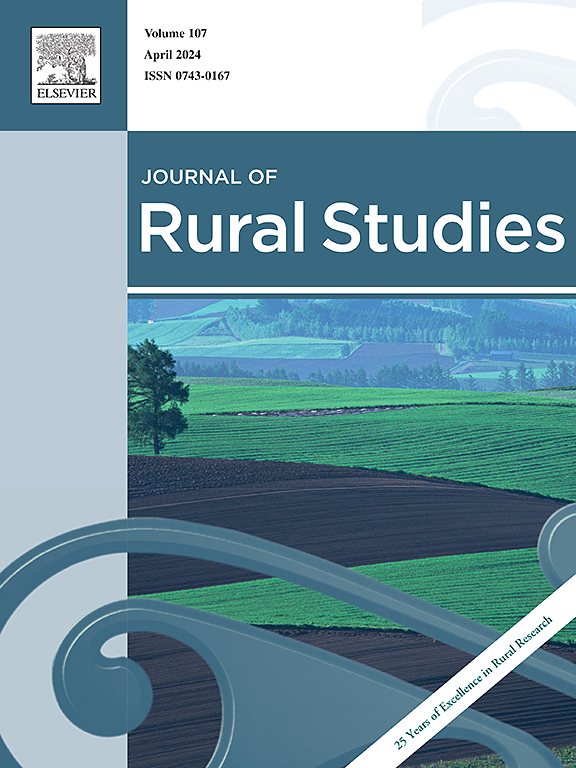Spatial depopulation risk assessment through spatial principal component analysis and indicator kriging in Castilla-La Mancha (Spain)
IF 5.7
1区 社会学
Q1 GEOGRAPHY
引用次数: 0
Abstract
Rural depopulation, which refers to a chronic decrease in the inhabitants of a rural area that affects the spatial distribution of the population, is an emerging issue that has entered the public policy agenda in recent years. Recent studies of rural depopulation have attempted to measure rural depopulation risk using depopulation or development indexes, but without considering a crucial dimension in this field: spatial dependence. The main objective of this paper is to include spatial dependence in the analysis using two novel approaches. First, we propose a spatial depopulation risk index (sDRI) for a large set of demographic and socio-economic variables using spatial principal component analysis. For this purpose, we use a geostatistical tool, the semivariogram, to determine the range of spatial dependence. Second, we provide a depopulation risk probability map (DRPM), showing the risk across the region as a whole, produced using Indicator Kriging. We apply these methods to the case of Castilla-La Mancha, a region of Spain in which vast areas have population densities lower than those of Siberia or Lapland, and which has been a pioneer in the implementation of laws and economic measures to combat rural depopulation. The results show that (i) accounting for spatial dependence in the design of the compound index provides a consistent classification of municipalities according to depopulation risk, and (ii) depopulation risk probability maps are suitable instruments for the identification of zones in which countermeasures can be applied.

基于空间主成分分析和指标克里格法的西班牙卡斯蒂利亚-拉曼恰地区人口减少空间风险评估
农村人口减少是指农村地区居民的长期减少,影响到人口的空间分布,是近年来进入公共政策议程的一个新兴问题。最近关于农村人口减少的研究试图使用人口减少或发展指数来衡量农村人口减少的风险,但没有考虑到这一领域的一个关键维度:空间依赖性。本文的主要目的是利用两种新方法将空间依赖性纳入分析。首先,利用空间主成分分析方法,提出了人口和社会经济变量的空间减少风险指数(sDRI)。为此,我们使用一种地质统计学工具,即半变异函数,来确定空间依赖性的范围。其次,我们提供了一个人口减少风险概率图(DRPM),显示了整个地区的风险,使用指标克里格生成。我们将这些方法应用于卡斯蒂利亚-拉曼查的情况,这是西班牙的一个地区,其中广大地区的人口密度低于西伯利亚或拉普兰的人口密度,并且是执行法律和经济措施以防止农村人口减少的先驱。研究结果表明:(1)在综合指数设计中考虑空间相关性,可以根据人口减少风险对城市进行一致的分类;(2)人口减少风险概率图是确定可以采取对策的区域的合适工具。
本文章由计算机程序翻译,如有差异,请以英文原文为准。
求助全文
约1分钟内获得全文
求助全文
来源期刊

Journal of Rural Studies
Multiple-
CiteScore
9.80
自引率
9.80%
发文量
286
期刊介绍:
The Journal of Rural Studies publishes research articles relating to such rural issues as society, demography, housing, employment, transport, services, land-use, recreation, agriculture and conservation. The focus is on those areas encompassing extensive land-use, with small-scale and diffuse settlement patterns and communities linked into the surrounding landscape and milieux. Particular emphasis will be given to aspects of planning policy and management. The journal is international and interdisciplinary in scope and content.
 求助内容:
求助内容: 应助结果提醒方式:
应助结果提醒方式:


